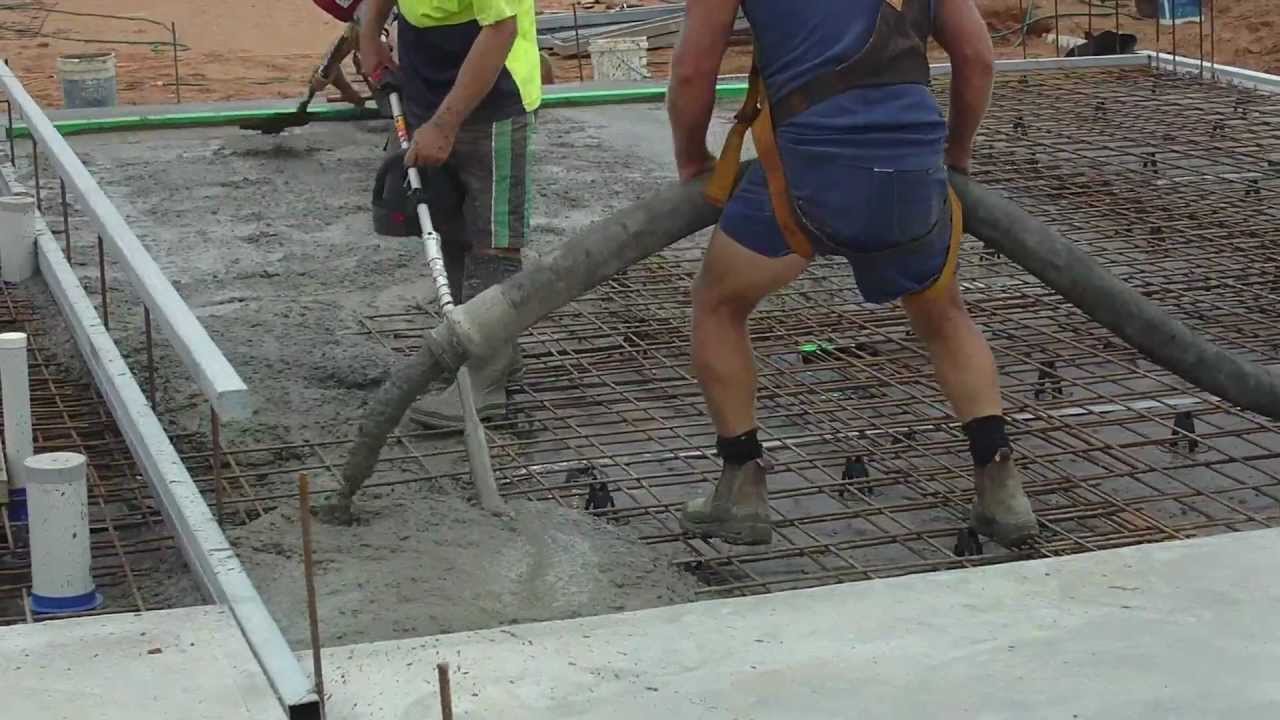Reinforced concrete
Reinforced concrete (RC) is a versatile composite and one of the most widely used materials in modern construction. Concrete is a relatively brittle material that is strong under compression but less so in tension. Plain, unreinforced concrete is unsuitable for many structures as it is relatively poor at withstanding stresses induced by vibrations, wind loading, and so on.
To increase its overall strength, steel rods, wires, mesh or cables can be embedded in concrete before it sets. This reinforcement, often known as rebar, resists tensile forces. By forming a strong bond together, the two materials are able to resist a variety of applied forces, effectively acting as a single structural element.
Whilst concrete has been used as a construction material since Roman times, the use of reinforcement, in the form of iron was only introduced in the 1850s by French industrialist François Coignet, and it was not until the 1880s that German civil engineer G. A. Wayss used steel as reinforcement.
Reinforced concrete can be precast or cast-in-place (in situ) concrete, and is used in a wide range of applications such as; slab, wall, beam, column, foundation, and frame construction. Reinforcement is generally placed in areas of the concrete that are likely to be subject to tension, such as the lower portion of beams. It is usual for there to be a minimum of 50 mm cover, both above and below the steel reinforcement, to resist spalling and corrosion which can lead to structural instability.
There are also a number of types of non-steel reinforcement that can be used, predominately as a means of controlling cracking. Fibre-reinforced concrete is a concrete mix that contains short discrete fibres that are distributed uniformly throughout the material. Fibres can be made of glass, polypropylene, synthetic and natural materials, as well as steel.
Prestressed concrete allows for predetermined, engineering stresses to be placed in concrete members to counteract the stresses that occur when they are subject to loading. In ordinary reinforced concrete, stresses are carried by the steel reinforcement, whereas prestressed concrete supports the load by induced stresses throughout the entire structural element.
This makes it more resistant to shock and vibration than ordinary concrete, and able to form long, thin structures with much smaller sectional areas to support equivalent loads. Pre-stressing may be achieved by pre-tensioning or post-tensioning.
See Prestressed concrete for more information.
Reinforced concrete is extremely durable and requires little maintenance. It has good thermal mass, and is inherently fire resistant. Rebar is generally made from 100% recycled scrap, and at the demolition stage, the concrete and rebar are capable of being separated so that the steel can be recycled.
However, concrete has a relatively high embodied energy, resulting from its extraction, manufacture and transportation. Waste materials can be included within the concrete mix such as RCA (Recycled Crushed Aggregate), GGBS (Ground Granulated Blast-Furnace Slag) and PFA (Pulverised Fuel Ash), however, issues such as moisture content and material variability may make its recycling unviable.
[edit] Related articles on Designing Buildings Wiki
- Admixtures in concrete.
- Assessing the fire performance of existing reinforced concrete flooring systems.
- Cast-in-place concrete.
- Cellular concrete.
- Concrete.
- Concrete frame.
- Concrete-steel composite structures.
- Design of durable concrete structures.
- Ferro-cement.
- Fly ash.
- Formwork.
- Glass reinforced concrete.
- Graphene-reinforced concrete.
- Grouting in civil engineering.
- Isokon Flats.
- Maunsell forts.
- Prestressed concrete.
- Recycled concrete aggregate RCA.
- Smart concrete.
- Textile-reinforced mortars TRM.
- The properties of concrete.
[edit] External resources
Featured articles and news
The UK's Modern Industrial Strategy: A 10 year plan
Previous consultation criticism, current key elements and general support with some persisting reservations.
Building Safety Regulator reforms
New roles, new staff and a new fast track service pave the way for a single construction regulator.
Architectural Technologist CPDs and Communications
CIAT CPD… and how you can do it!
Cooling centres and cool spaces
Managing extreme heat in cities by directing the public to places for heat stress relief and water sources.
Winter gardens: A brief history and warm variations
Extending the season with glass in different forms and terms.
Restoring Great Yarmouth's Winter Gardens
Transforming one of the least sustainable constructions imaginable.
Construction Skills Mission Board launch sector drive
Newly formed government and industry collaboration set strategy for recruiting an additional 100,000 construction workers a year.
New Architects Code comes into effect in September 2025
ARB Architects Code of Conduct and Practice available with ongoing consultation regarding guidance.
Welsh Skills Body (Medr) launches ambitious plan
The new skills body brings together funding and regulation of tertiary education and research for the devolved nation.
Paul Gandy FCIOB announced as next CIOB President
Former Tilbury Douglas CEO takes helm.
UK Infrastructure: A 10 Year Strategy. In brief with reactions
With the National Infrastructure and Service Transformation Authority (NISTA).
Ebenezer Howard: inventor of the garden city. Book review.
The Grenfell Tower fire, eight years on
A time to pause and reflect as Dubai tower block fire reported just before anniversary.
Airtightness Topic Guide BSRIA TG 27/2025
Explaining the basics of airtightness, what it is, why it's important, when it's required and how it's carried out.
Construction contract awards hit lowest point of 2025
Plummeting for second consecutive month, intensifying concerns for housing and infrastructure goals.
Understanding Mental Health in the Built Environment 2025
Examining the state of mental health in construction, shedding light on levels of stress, anxiety and depression.























Comments
One of the methods of contrast with earthquakes is seismic retrofitting of buildings.
Therefore, old and unsafe buildings should be strengthened by methods such as <a href="https://afzir.com/en/strengthening-with-frp/what-is-frp/">strengthening with FRP</a> in accordance with ACI 4402R or retrofitted by classical methods such as FEMA 360.